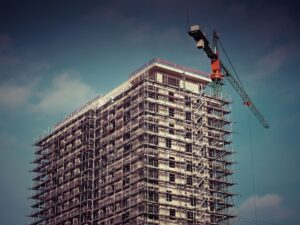As a Landlord or Leaseholder, understanding the Section 20 consultation process for major works is crucial for ensuring the best outcome for all parties involved. In this article, we’ll explain everything you need to know about Section 20 consultations, including what they are, why they are necessary, the process, roles and responsibilities of both the Landlord and Leaseholder, and potential issues to consider.
What is a Section 20 Consultation?
A Section 20 consultation is a process prescribed by the Landlord and Leaseholder Act 1985, that is required when a Landlord intends to undertake qualifying major works in a property. Qualifying works are deemed as any project in which any leaseholder will contribute more than £250 including VAT – with varying contributions, it is wise for Landlords to ensure they review all Leaseholders’ contributions. The consultation process is designed to ensure that Leaseholders are informed of the Landlord’s intentions and that they are given an opportunity to provide feedback and objections.
The consultation process is divided into two main parts.
1 – The first part requires the Landlord to give written notice to all Leaseholders, setting out the nature and scope of the proposed works, this notice lasts for 30 days to allow for any consultation from Leaseholders.
2 – The second part requires the Landlord to provide estimates for the project, again with this notice lasting 30 days to allow for any consultation from leaseholders, before proceeding with the works should the funds already be in place via the reserve fund or sinking fund.
3 – There is a third and final notice that can be provided, a Notice to Award Contract, however this is only required when the contractor chosen is not the lowest estimate.
Why is a Section 20 Consultation necessary?
The Section 20 consultation process was introduced to ensure that Leaseholders are adequately informed about any proposed works that may affect the property, in which the total cost of the work shall exceed £250, including VAT, for any one Leaseholder. It also ensures that the Leaseholders’ rights are respected and that their views are taken into account when deciding whether to proceed with the specific set of works.
The consultation process also provides Leaseholders with the opportunity to object to the works or suggest alternatives. This helps to ensure that the works are carried out in a way that is satisfactory to both Landlord and Leaseholders.
The role of the Landlord in a Section 20 Consultation
The Landlord has several responsibilities in a Section 20 consultation. Firstly, they must provide written notice to all Leaseholders of their intention to undertake the works. This should include information about the nature and scope of the works, estimated costs, and how long the works are expected to take.
The Landlord must also consider any objections or suggestions received from the Leaseholders before deciding whether to proceed with the works. They must also take reasonable steps to ensure that the Leaseholders are informed of any changes to the proposed works and any associated costs.
Finally, the Landlord must ensure that the works are carried out in a way that is satisfactory to both the Landlord and Leaseholders. This includes ensuring that the works are completed on time and within budget, and that any changes to the works are communicated to the Leaseholders.
The role of the Leaseholder in a Section 20 Consultation
The Leaseholder’s role in a Section 20 consultation is to consider the information provided by the Landlord and submit any objections or suggestions they may have. The Leaseholder should ensure that they are aware of the nature and scope of the proposed works, estimated costs, and how long the works are expected to take.
The Leaseholder should also be aware of any potential issues to consider, such as disruption to the tenancy, changes to the property, or potential costs associated with the works. If the Leaseholder has any objections or suggestions, they should submit them to the Landlord in writing in line with the consultation process.
The legal requirements of a Section 20 Consultation
It is important to note that the Section 20 consultation process is a legal requirement. The Landlord must provide written notice to all Leaseholders and give them reasonable time to consider the information and submit any objections or suggestions. The Landlord must also take reasonable steps to ensure that any changes to the proposed works are communicated to the Leaseholders.
The Landlord must also consider any objections or suggestions received from the Leaseholders at each stage of the consultation, before proceeding with the works. Failure to comply with these legal requirements may result in the Landlord being liable for damages or other costs over the £250 threshold.
The costs associated with a Section 20 Consultation
The costs associated with a Section 20 consultation vary depending on the nature and scope of the works. Generally, leaseholders will be liable for all costs associated with the project including contractor costs, legal or surveying costs, value added tax, and any specific costs associated with the project.
All costs should be noted in the second notice sent out by the Landlord however so there is plenty of notice in which to object or provide comments. There is no legal obligation for Landlords to contribute towards major works unless the Lease specifically requires this so you can expect all costs associated with the project to generally be paid for by the Leaseholders, whether this be in the form of a one-off payment, or through the reserve/sinking fund.
Conclusion
Understanding the Section 20 consultation process is essential for Landlords and Leaseholders alike. The process is designed to ensure that Leaseholders are informed of the Landlord’s intentions and that their views are taken into account when deciding whether to proceed with the works. The consultation process also provides Leaseholders with an opportunity to provide feedback and objections.
It is important for both the Landlord and Leaseholder to be aware of the legal requirements of a Section 20 consultation and to ensure that these are complied with. It is also important to consider any potential issues to consider and the potential costs associated with the works.
If you’re a Landlord and you’re considering undertaking major works, it is important to ensure that you understand the Section 20 consultation process and that you comply with the legal requirements. Doing so will help to ensure that the works are carried out in a way that is satisfactory to all parties involved.
Should you require advice, please contact Strangford Management and we would be happy to assist you.
Read more…
- EWS1 Form Explained: Hidden Requirements Your Surveyor Won’t Tell You
- NHBC Cover Explained: Your Essential Guide for Leaseholders (2025)
- Ministers Set £30bn Cladding Crisis Deadline for 2029
- Service Charge Disputes Made Simple: Your Rights as a Leaseholder
- Breaking: Leasehold Reform Scraps Two-Year Wait Rule From January 2025




